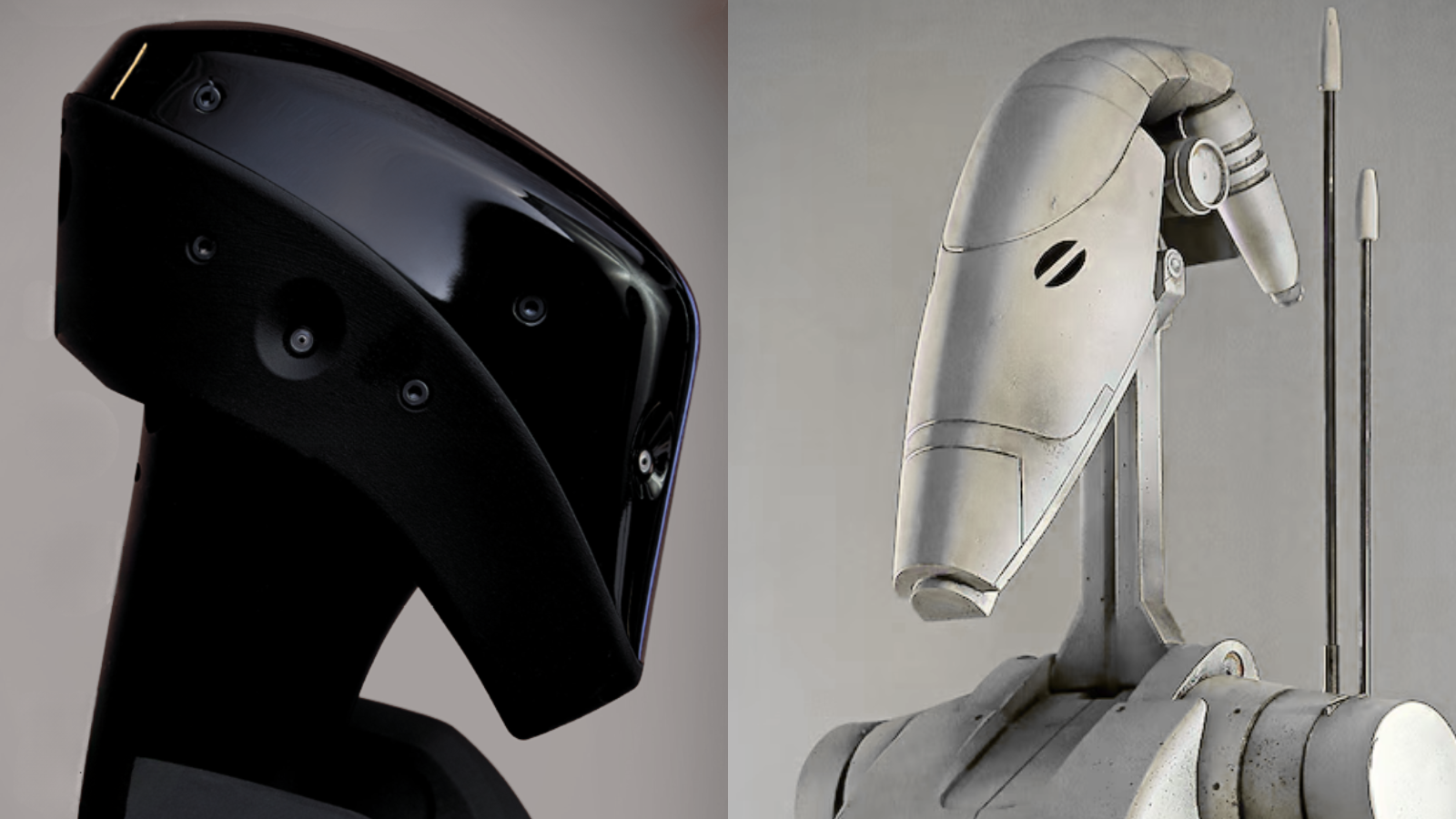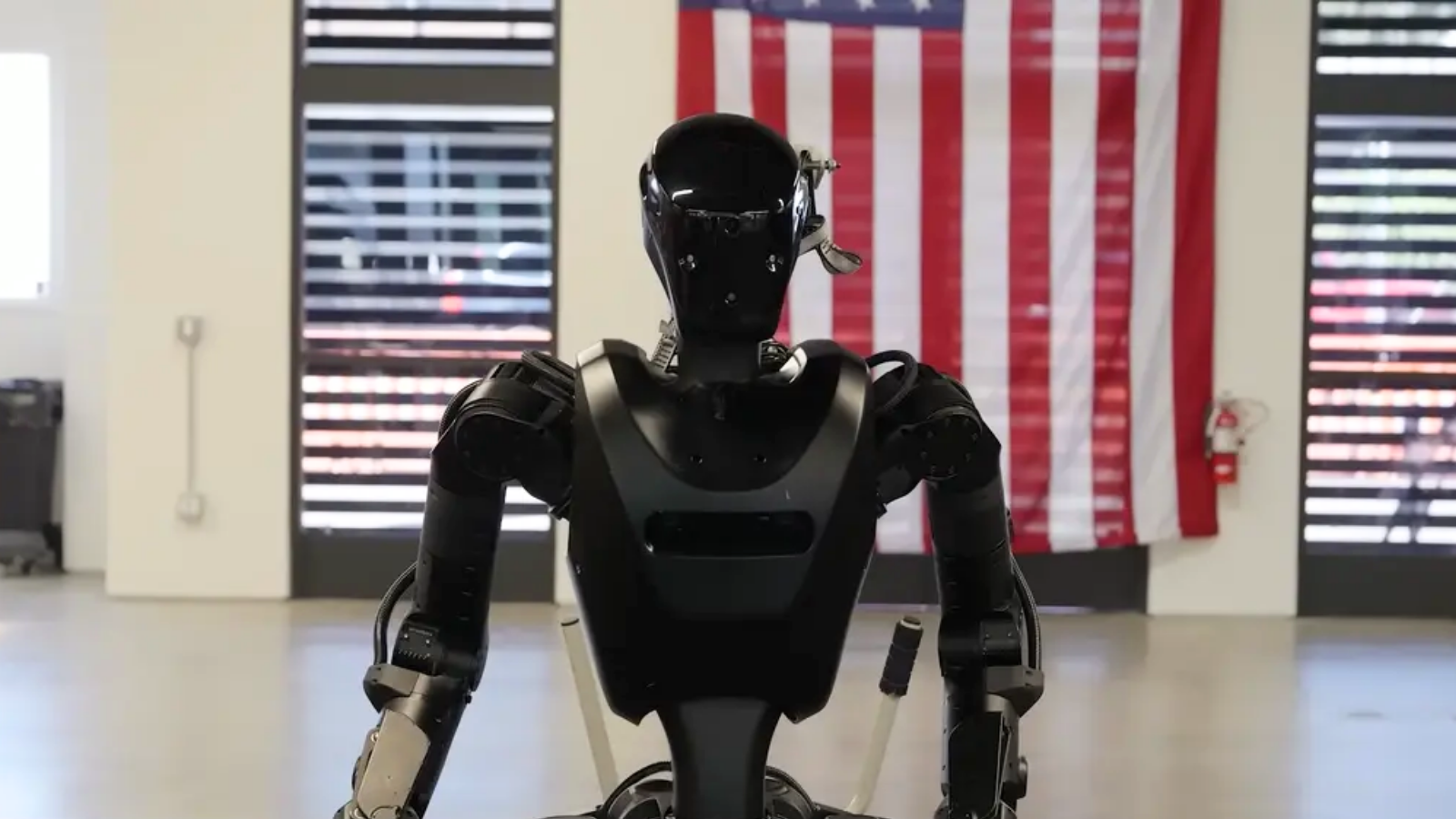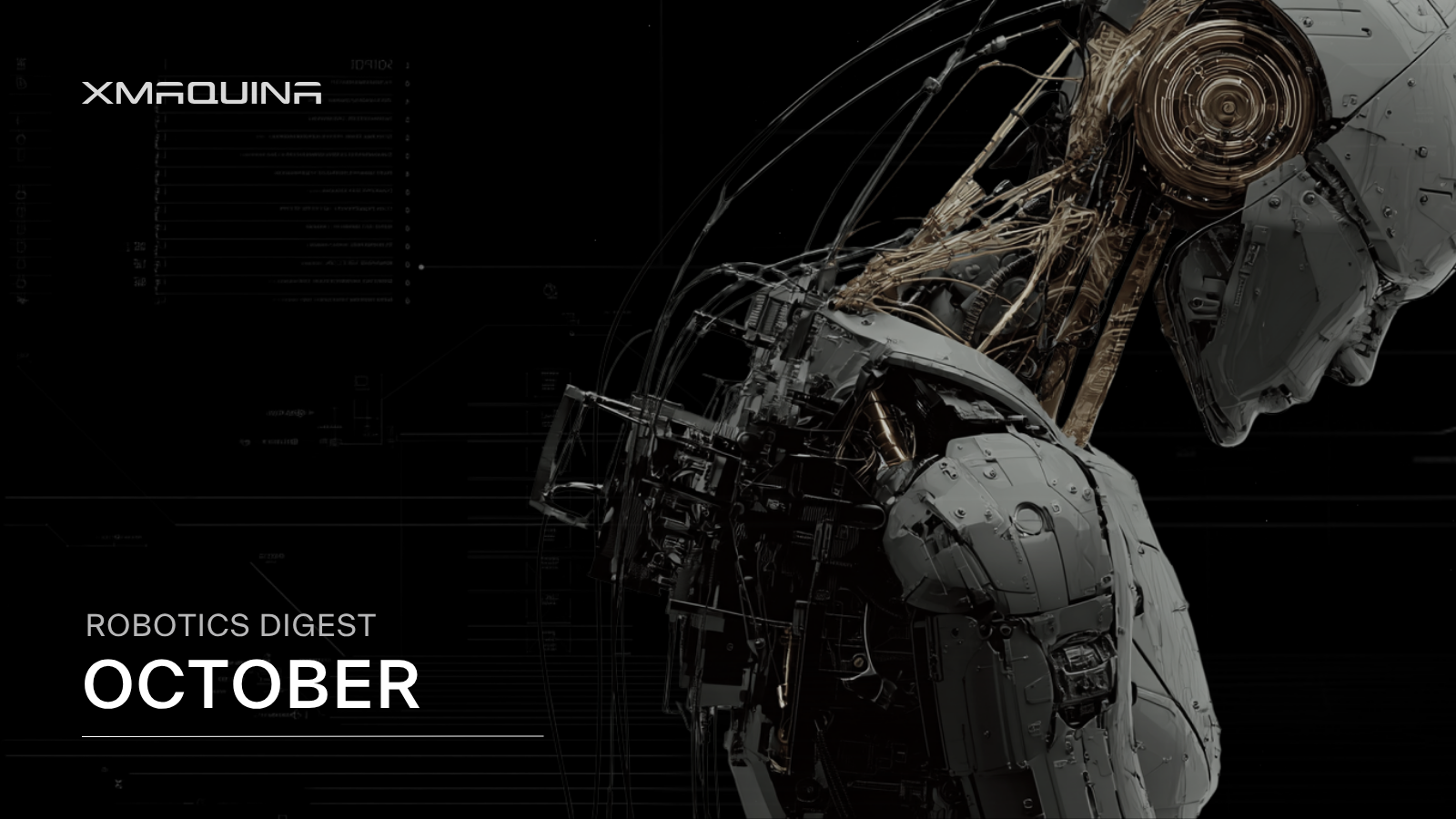.png)
November 27, 2025
Category:
Physical AI
Read time:
11 minutes
Share This:
When Marvel fans hear "War Machine," they picture a weaponized Iron Man suit firing shoulder cannons into the sky. In 2025, the closest real-world analogue might be standing under strobe lights in a San Francisco nightclub, DJ’ing a tech party.
That robot is Phantom MK1, built by Foundation Robotics Labs, a San Francisco–based startup openly pursuing what most humanoid robotics companies carefully avoid: defense applications.
With its stark, aggressive design reminiscent of the battle droids from Star Wars: Episode II: Attack of the Clones, Phantom appears purpose-built as a War Machine in the Marvel sense, a militarized platform that makes no apologies for its intended battlefield role. Yet according to coverage of the event, this combat-styled robot performed a 30-minute DJ set at Temple Nightclub during a "Tech GigaParty," surprising an audience that wasn't expecting a machine designed for warfare to headline an EDM slot.

This same robot is also positioned for factory work, logistics, and explicitly, military applications. So the question practically writes itself: Is Foundation Robotics building a war machine?
Let’s break down what is real, what is hype, and why Phantom MK1 is at the center of one of the most controversial debates in Humanoid robotics today.
Phantom MK1: Real Humanoid, Real Deployments
Away from the nightclub lights, Phantom MK1 has verifiable specifications. Public sources describe it as a roughly 1.75 m, 80 kg humanoid platform designed for industrial and defense tasks. It features a multi-camera head for perception, modular design, and hardware meant to survive rough conditions.
Media outlets have shown Phantom MK1 performing industrial demonstrations, simple pick-and-place, packaging lines, and teleoperated manipulation tasks that resemble early deployments of Figure AI, Apptronik, and 1X. In multiple segments, journalists have personally teleoperated Phantom via VR headsets, confirming that at least part of the robot’s current capability relies on human-in-the-loop control.

Hardware Built For Rough Terrain And Real Risk
Foundation’s founders publicly emphasize a hardware-first, combat-tolerant philosophy. Phantom uses electric actuators, likely built around cycloidal-style drives, a technology known for durability and low backlash, even under high stress. Public sources state these actuators can reach ~160 Nm of peak torque, placing Phantom among the stronger humanoids in its class.
Design cues such as its armor-like plating, shock-resistant joints, dustproof housings, signal that Phantom is built for environments far harsher than a warehouse floor. These design choices are not accidental. Foundation’s founders frequently speak about the need for robots to operate in “near-peer military environments” and high-risk missions.
Compared to the soft, minimalist aesthetic of the 1X Neo, or even the Figure AI F.03, the Phantom MK1 looks distinctly martial. It’s rugged, almost tactical.
A Startup With A Dramatic Origin Story
Foundation Robotics Labs carries a controversial origin story. The company is led by Sankaet Pathak, formerly CEO of Synapse, a banking-as-a-service fintech that spectacularly collapsed in 2024. In the aftermath of Synapse's high-profile bankruptcy, which left thousands of customers unable to access their funds, Pathak made an abrupt pivot into humanoid robotics and began raising capital for Foundation. His co-founder, Mike LeBlanc, brings a starkly different pedigree: a former U.S. Marine and co-founder of Cobalt Robotics, he injects a defense operations mindset directly into the company's strategic DNA.
Foundation subsequently acquired Boardwalk Robotics, a startup rooted in the IHMC robotics ecosystem. IHMC's lineage includes the Nadia humanoid platform, foundational contributions to NASA's Valkyrie robot, and competitive entries in the DARPA Robotics Challenge. This acquisition supplied Foundation with a battle-tested foundation of humanoid engineering expertise: the technical backbone needed to transform defense ambitions into deployable hardware.

Foundation’s Positioning: The Anti-Figure AI
Here's where Foundation breaks from the pack. Most U.S. humanoid robotics companies have explicitly renounced military applications:
- Figure AI: Founder Brett Adcock has publicly declared, "We will never do military work."
- Boston Dynamics, Agility Robotics, ANYbotics, Clearpath, Open Robotics, and Unitree Robotics co-signed a "No Weaponization" pledge in 2023, committing to keep their platforms out of armed conflict.
Foundation Robotics has taken the opposite path, and made no effort to soften it.
Public reporting across SFGate, NYPost, VICE, and NewsNation converges on the same narrative: Foundation explicitly intends Phantom for national defense applications, including logistics operations in active war zones, hazardous maintenance under fire, remote refueling in contested territories, and, eventually, direct battlefield deployment.
Put simply: while the rest of the humanoid robotics industry runs from the Pentagon, Foundation Robotics is sprinting toward it. Where others see ethical red lines, Foundation sees a $800+ billion defense budget and a first-mover advantage in a market competitors have voluntarily abandoned.

The Software Stack: Teleoperation Today, Autonomy Tomorrow
Foundation structures Phantom around a three-tier intelligence architecture that prioritizes battlefield-ready deployability over cutting-edge autonomy:
1. Camera-first perception: Rather than relying on expensive LiDAR arrays, Phantom uses multiple front and side cameras for environmental awareness, a deliberate cost-reduction strategy that simplifies sensor integration and improves reliability by reducing potential points of data conflict.
2. VR-based teleoperation: Journalists have directly piloted Phantom using VR headsets with hand-tracking capabilities, allowing operators to mirror their movements in real-time. During CNET's demonstration, the reporter experienced calibration issues where the robot's hands became crossed, requiring a system reset, exposing the current technical limitations of this approach. The robot operates through VR-based telepresence with real-time human control enhanced by onboard AI for navigation and stabilization, positioning it as semi-autonomous rather than fully independent.
3. Hybrid AI - state-based models meet imitation learning: Foundation distinguishes itself by combining imitation learning with state-based models that explicitly incorporate physics, kinematics, and task dynamics. Unlike competitors such as Figure AI and Tesla's Optimus, which rely primarily on learning-by-demonstration, Foundation claims this hybrid approach enables more robust autonomy with significantly less training data, asserting that simple tasks can be learned in approximately 30 minutes
The long-term vision includes natural language voice command execution, zero-shot learning capabilities, and augmented reality interfaces like Apple's Vision Pro for human-robot collaboration. High-level intent is processed by large language model reasoning, while proprietary action models translate tasks into whole-body motion Humanoid.
This tiered approach reflects the emerging industry consensus: deploy human-controlled systems immediately for high-stakes military scenarios, while gradually layering in autonomy as the technology matures. For defense applications where lives hang in the balance, Foundation has chosen pragmatic deployability over aspirational full autonomy.
A Nightclub Stunt With A Strategic Purpose
The nightclub appearance was no accident, it was engineered provocation. Foundation staged Phantom MK1's DJ performance deliberately, aiming to "normalize" humanoids in everyday settings while demonstrating the robot's robustness and cultural adaptability.
The gambit triggered exactly the reaction Foundation sought: viral TikTok clips flooded social media, tabloid headlines branded it "the nightclub war robot," heated debates erupted over the ethics of militarization, and public awareness of Foundation skyrocketed. The juxtaposition proved irresistible, a combat-designed machine spinning tracks under strobe lights generated more attention than any technical white paper ever could.
Whether the stunt reads as marketing brilliance or dystopian spectacle depends on your perspective, but the strategic outcome is undeniable: Phantom MK1 has become one of the most discussed humanoid platforms in the United States, and Foundation Robotics, a company barely two years old, now commands attention in a crowded field of competitors who've spent years avoiding precisely this kind of controversy.
What Phantom Means For Physical AI
Regardless of personal views on defense robotics, Phantom MK1 signals several important shifts in the humanoid landscape:
1. The defense lane is opening.
While U.S. companies avoid defense affiliations, global competitors (especially in China) are charging ahead. Foundation is betting the U.S. won’t stay passive forever.
2. Cultural presence is becoming a competitive edge.
Foundation used a nightclub to turn a defense robot into a cultural object. Attention fuels talent, capital, and momentum.
3. Investors will have to choose a side.
If Foundation succeeds, the question “Should robots be used for defense?” will become impossible to ignore.
Bullish on Robotics? So Are We.
XMAQUINA is a decentralized ecosystem, giving a global community early exposure to the world’s leading robotics companies—before they disrupt trillion-dollar industries.
Now, you don’t have to be sidelined. Own the rise of humanoids.
Join our Discord and connect with thousands of futurists building the XMAQUINA DAO.
Follow us on X for the latest updates.
Owner:


.png)


